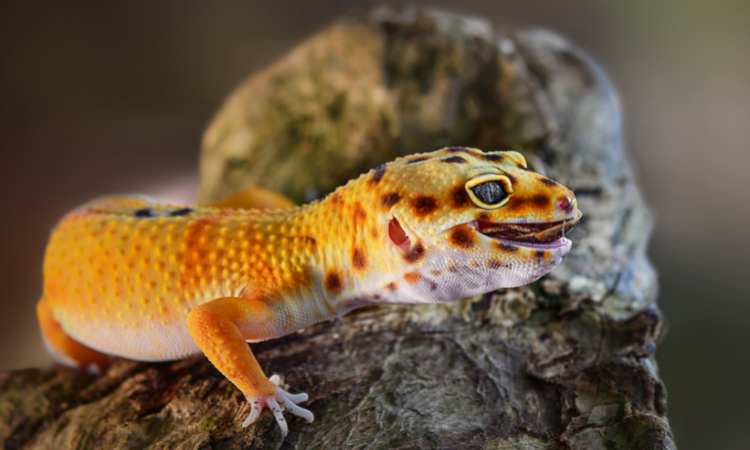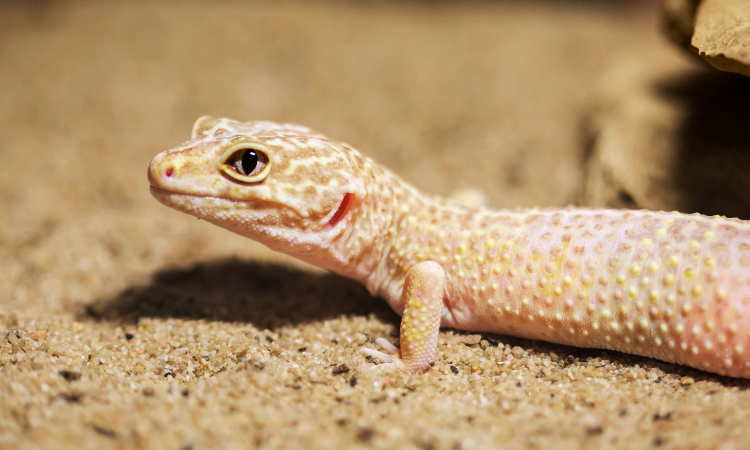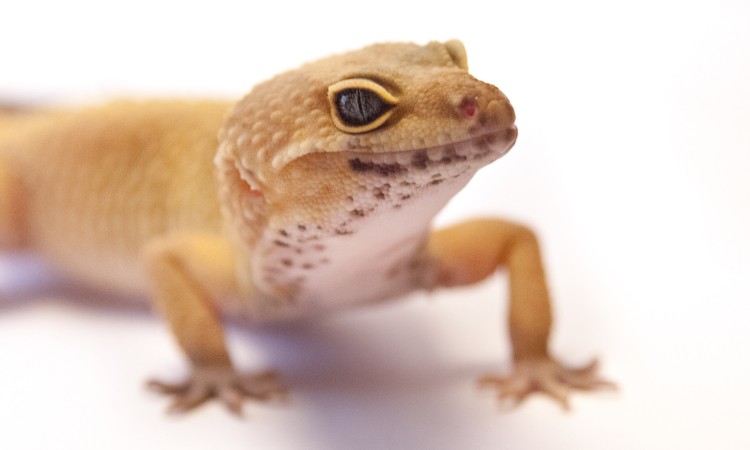There are a few things to consider when choosing the best substrate for your gecko’s bedding.
First, you’ll want to decide whether you want something natural or artificial. Natural substrates like soil and sand can be good options, but they can also harbor bacteria and other unwelcome critters. Artificial substrates like paper towel or reptile carpet are easier to clean and maintain, but some geckos prefer the feel of natural substrates.
Whichever route you choose for your gecko’s bedding, make sure the substrate is at least 3-4 inches deep to give your gecko plenty of room to burrow. And finally, avoid using cedar or pine shavings as bedding for your gecko (or any other reptile), as these can be harmful to their health.

There are many different types of substrates available for gecko bedding, including sand, soil, mulch, and more
When it comes to gecko care, substrate selection is a key factor. Geckos need both a comfortable and safe habitat, and choosing the right bedding can help provide this. Fortunately, there are many types of substrates suitable for gecko use, including sand, soil, mulch, and more.
Each type of substrate provides its own benefits and drawbacks, so research is important to determine which option will match your gecko’s needs. In all cases, be sure to choose an unscented substrate to reduce the possibility of negative exposure to chemicals or fumes.
With the right selection of gecko bedding in place, owners can rest easy knowing that their geckos will have everything they need for a happy life in captivity!
It’s important to choose a substrate that is safe for your gecko and won’t cause health problems
When it comes to geckos, the safety of their substrate is a major concern. Poorly chosen substrate can lead to serious health problems, including severe respiratory and digestive tract infections. It’s important to choose a safe substrate that won’t do any harm.
Natural substrates such as soil and coconut fiber are generally considered safe options because they’re designed to mimic gecko’s natural habitats, but there are other products available too such as paper towels, newspapers or terrarium liners.
Ultimately, you want something that will absorb moisture and allow geckos to burrow beneath it without causing any issues. Choosing the right gecko substrate is essential for the health and well-being of your beloved pet!

Some substrates are better than others at holding moisture and preventing mold growth
The gecko is a unique reptile that can thrive in many different environments, but did you know it also has special abilities when it comes to substrate selection? That geckos have an impressive built-in ability to recognize which substrates are better than others at holding moisture and preventing mold growth.
Studies have shown geckos have a remarkable capacity to identify substrates that can reduce the occurrence of mold and retain enough moisture for gecko health and comfort.
This illustrates the gecko’s enhanced sensitivity to environmental factors, including the amount of moisture it can acquire from its environment, as well as its innate preferences for certain types of substrates.
You should also consider the size of your gecko when choosing a substrate – some are too small for larger geckos
Geckos are wonderful pets, but it’s important to consider the size of your gecko when making decisions about substrate. Small geckos require a different substrate than larger geckos due to their need for secure footing and age-appropriate substrate.
Too large of a substrate for a smaller gecko can prove difficult and even dangerous as geckos could get stuck between crevices. A good rule of thumb is that if the gecko can fit their head between two pieces of substrate, it’s too big. To ensure safe handling for your gecko, use a substrate that is appropriate for their size and age.

Ultimately, the best substrate for your gecko is one that meets all of their needs and is safe for them to use
Choosing the best substrate for your gecko is an important decision that should not be overlooked. In order to ensure that the gecko is healthy, it’s essential to choose one that meets all of their needs and is safe.
Substrates such as uncalcined clay litter can be toxic when ingested, so it’s important to do your research and make sure you’re choosing a product that will benefit your gecko over time. Not every gecko will have the same preferences either, so be sure to consider what works best for yours in particular.
Taking the time to pick out the optimal substrate could prove beneficial in the long term for your gecko’s health and wellbeing.
Overall, it’s important to do your research when choosing the right substrate for your gecko. Different substrates have their own strengths and weaknesses, so find out which option is best for your furry friend’s needs and make sure you are providing them with a substrate that will keep them healthy.
Additionally, make sure you choose a substrate size that is suitable to the size of your gecko – one that’s too big or too small may lead to health problems. Careful consideration of these various factors will ensure you’re giving your gecko the best possible environment in which to live.
Regular monitoring of your gecko’s environment as well as occasional cleanings will help to keep them happy and healthy while they climb all over their new bedding. With the right care and attention, you can give your gecko a comfortable home where they will thrive!
Related posts:

Hi – I’m Erika, the lead gecko enthusiast here at Geckopedia! I write articles about pet geckos, including what to feed your leopard gecko and how to help your pet gecko live a long, happy life! I graduated with advanced degrees from UC-Berkeley, the University of Southern California (USC) and Indiana University-Bloomington, where I studied Biology and Animal Science. I use my experience to help others learn about gecko care, and I am an advocate for all topics gecko related!
